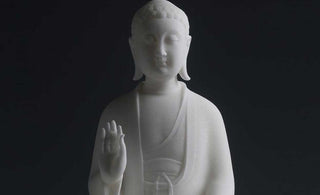
In Buddhist art and meditation, the lotus flower holds profound significance, serving as a powerful metaphor for spiritual awakening and inner transformation. This revered symbol transcends cultural and religious boundaries, embodying a universal message of enlightenment and purity.
1. Symbolism of the Lotus Flower in Buddhist Tradition
In Buddhist symbolism, the lotus flower holds a revered position, representing purity, enlightenment, and rebirth. Emerging from the murky depths of water, the lotus blossoms unsullied and untainted by its surroundings, symbolizing spiritual purity and the ability to rise above worldly temptations. Its growth from the mud, followed by the unfolding of its petals to reveal a pristine bloom, mirrors the journey of the soul from ignorance to enlightenment.
The lotus, rooted in murky ponds, rises immaculately above the water, untouched by the impurities below. This imagery resonates deeply within meditative practices, prompting individuals to visualize the lotus as they seek inner peace amidst life's tumultuous waters. The process involves envisioning the lotus unfolding its petals, mirroring one's own spiritual evolution—blossoming from the depths of ignorance to the heights of enlightenment.
Central to this symbolism is the lotus's resilience. Despite its origins in unfavorable conditions, it blooms with grace and beauty. This resilience mirrors the human capacity to overcome adversity and emerge spiritually enriched. Meditators draw inspiration from this resilience, harnessing it to navigate life's challenges while maintaining inner purity and steadfastness.
Buddhist art, adorned with depictions of enlightened beings seated or standing on lotus flowers, accentuates their transcendence beyond worldly limitations. Buddhas and Bodhisattvas are often portrayed as effortlessly balanced upon the lotus, symbolizing their attainment of spiritual enlightenment amid the chaos of existence. The lotus serves as a pedestal, representing not only their purity but also their ability to remain untouched by the mundane while embodying compassion and wisdom.
2. The Lotus Sutra: A Sacred Text Emphasizing Enlightenment
The Lotus Sutra, one of the most revered texts in Mahayana Buddhism, frequently employs the lotus flower as a metaphor to elucidate profound spiritual truths. The sutra emphasizes the innate potential within every individual to attain Buddhahood, akin to the lotus flower's ability to flourish and bloom amidst adverse conditions. Through diligent practice and unwavering faith, practitioners can transcend the limitations of ego and delusion, attaining a state of enlightenment symbolized by the radiant lotus blossom.
Contemplation on the lotus encourages practitioners to emulate its qualities. The purity of the lotus prompts introspection, urging individuals to cleanse their minds and hearts of negativity and impurities. Its unfolding petals symbolize the gradual awakening of spiritual consciousness, inviting practitioners to cultivate virtues such as compassion, wisdom, and equanimity.
Moreover, the lotus represents the interconnectedness of the spiritual and the physical realms. Its growth from the depths of muddy waters toward the light symbolizes the journey from ignorance to enlightenment. This metaphor inspires individuals to strive for spiritual growth amid the complexities and challenges of everyday life.
The lotus's various stages of growth—bud, bloom, and seedpod—parallel the stages of spiritual development. Just as the lotus progresses through these stages, practitioners traverse their own journey of self-discovery, maturation, and eventual enlightenment.
3. The Growth Process of the Lotus: An Allegory for Spiritual Development
The lotus flower's growth process serves as a poignant allegory for spiritual development and transcendence in Buddhist beliefs. As the lotus rises from the murky depths, it remains unstained by its environment, signifying the cultivation of purity and detachment amidst worldly challenges. The unfolding of its petals, revealing a resplendent bloom, symbolizes the gradual unfolding of wisdom and enlightenment within the practitioner's heart. Just as the lotus transcends its origins to attain beauty and purity, individuals can overcome ignorance and suffering to realize their inherent Buddha-nature.
4. Lotus Flower in Art and Meditation: A Pathway to Enlightenment
Throughout Buddhist art and meditation practices, the lotus flower serves as a potent symbol and focal point for cultivating spiritual awareness and enlightenment. Meditative visualization of the lotus flower encourages practitioners to emulate its qualities of purity, resilience, and grace, fostering inner transformation and spiritual growth. Additionally, depictions of enlightened beings, such as Buddhas and Bodhisattvas, often feature the lotus flower, emphasizing their transcendent wisdom and compassionate nature. By engaging with the symbolism of the lotus flower, practitioners are inspired to cultivate virtues such as compassion, wisdom, and equanimity, essential qualities on the path to enlightenment.
In meditation, visualizing oneself as a lotus—rooted in the earth, reaching toward the heavens—creates a profound sense of connection with the universe. This contemplation fosters a deep understanding of one's place in the cosmic order and encourages the pursuit of spiritual elevation.
5. Contemporary Relevance: The Lotus Flower in Modern Spiritual Practices
In contemporary Buddhist practices and teachings, the symbolism of the lotus flower continues to resonate, offering profound insights into the nature of spiritual growth and transcendence. As individuals navigate the complexities of modern life, the lotus flower serves as a timeless reminder of the transformative power of faith, perseverance, and self-awareness. By embracing the teachings encapsulated within the lotus flower's symbolism, practitioners can navigate life's challenges with grace and equanimity, cultivating inner peace and enlightenment amidst adversity.
Conclusion
The lotus flower's representation of purity and enlightenment in Buddhist beliefs transcends mere symbolism, offering profound insights into the nature of spiritual growth and transcendence. Through its resilience, grace, and transformative journey from the depths of the mud to the radiant bloom, the lotus flower encapsulates the human potential to overcome suffering, ignorance, and delusion, realizing the inherent Buddha-nature within. As practitioners engage with the symbolism of the lotus flower through scripture, art, meditation, and contemporary practices, they are inspired to cultivate virtues such as purity, wisdom, compassion, and enlightenment, fostering a deeper connection with the timeless teachings of Buddhism and the path to ultimate liberation.
























